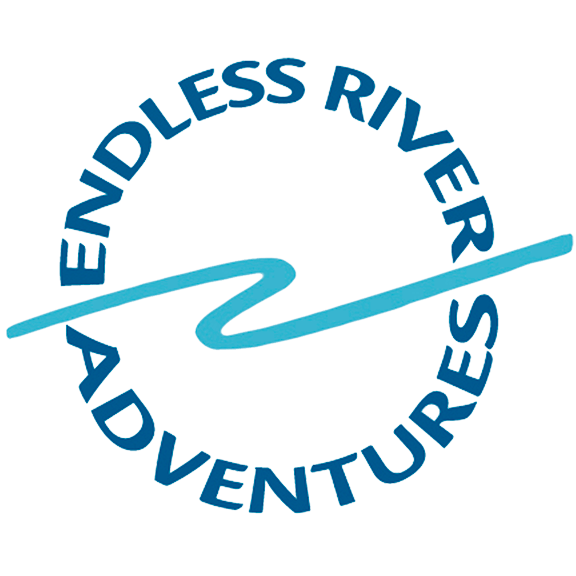
Zeta Rapid on the Futaleafu. Even to the unitiated the rapid looks crazy. Take 5,000 – 25,000 cfs and stuff all that volume into a Z-shaped mini canyon only about 20 feet wide. For the kayaker scouting the rapid, it takes only a few minutes scouting to note the over-hanging wall with a violently recirculating eddy tucked underneath it, the undercut walls looming downstream, and the eddy lines that look like they can (and in fact will) swallow full-volume boats without hesitation. For those with knowledge of the history of the rapid, add sives that cannot be immediately spotted (and in fact were learned of only when swimmers ended up in them). Zeta has a well-worn path where many an experienced paddler has gladly picked up their boat and walked around it. Zeta is where Lars Holbeck taught me one of my most important lessons in kayaking.
On this particular day, as if scouting Zeta was not intimidating enough, I was paddling with the likes of Lars, Phil DeReimer, Ken Kastorff and Mike Hipsher. Lars and Phil–the pioneers of the Futaleafu; Ken, working with Chris Spelius, pioneering running commercial kayaking trips on the river; and Mike Hipsher who had joined their ranks as a guide for Expediciones Chile. And then there was little ol’ me the video boater. I had only run Zeta once and was fully aware that it was not unusual for this group of elite guides to decide ahead of time they were walking Zeta so that they could relax and enjoy their day on the Upper Inferno Canyon. But today was a play day and there was a hint of good natured chest thumping going on. When we arrived at Zeta, I decided to video and watch everyone run the rapid before I made my decision.
Phil and Ken peeled out probably ten seconds apart from each other. Coming around the Z turn, Phil was swallowed by the eddy line. As Ken came screaming around the turn, the same eddy line swelled (with Phil still in it) and the two ended up on top of each other. Mike decided to spend some time in the undercut eddy from hell. That just left Lars still up on the canyon wall taking it all in. I will never forget the moment. I looked up and gave Lars an “are you running it” thumbs up. After a pause, he looked down at me, gave me his signature Lars grin, shook his head and motioned the “I’m walking” sign.
That was one of the formative moments of my paddling career. When Lars indicated that he was walking, I was flooded with the emotions of a fairly new kayaker: Lars – the pioneer of the Futa, walking Zeta? With all his friends already at the bottom? Guides all of them and he would be the only one to walk the rapid? Wow. It did not completely register that day, but I spent the night thinking about Lars walking Zeta. And eventually I thought maybe I understood: Lars was so comfortable with his paddling, and the knowledge that he could run it but did not feel it, that he could put his boat on his shoulder and walk around the rapid.
It took me a few years and more river time (in my case more beat downs) to fully process the significance of being able to walk a rapid myself. I always felt pressure as a guide, as a female, as someone trying to prove something … but I did not let Lars down. I finally understood that walking a rapid has nothing to do with whether you do or don’t have the skill, but because you have the good judgement to know when to make such a decision on any given day. I never had the chance to really thank Lars for that lesson. He passed on to that big river where elite kayakers go when they are finished paddling here, but his legacy definitely lives on inside me – and hopefully those I spend time with on the river.
